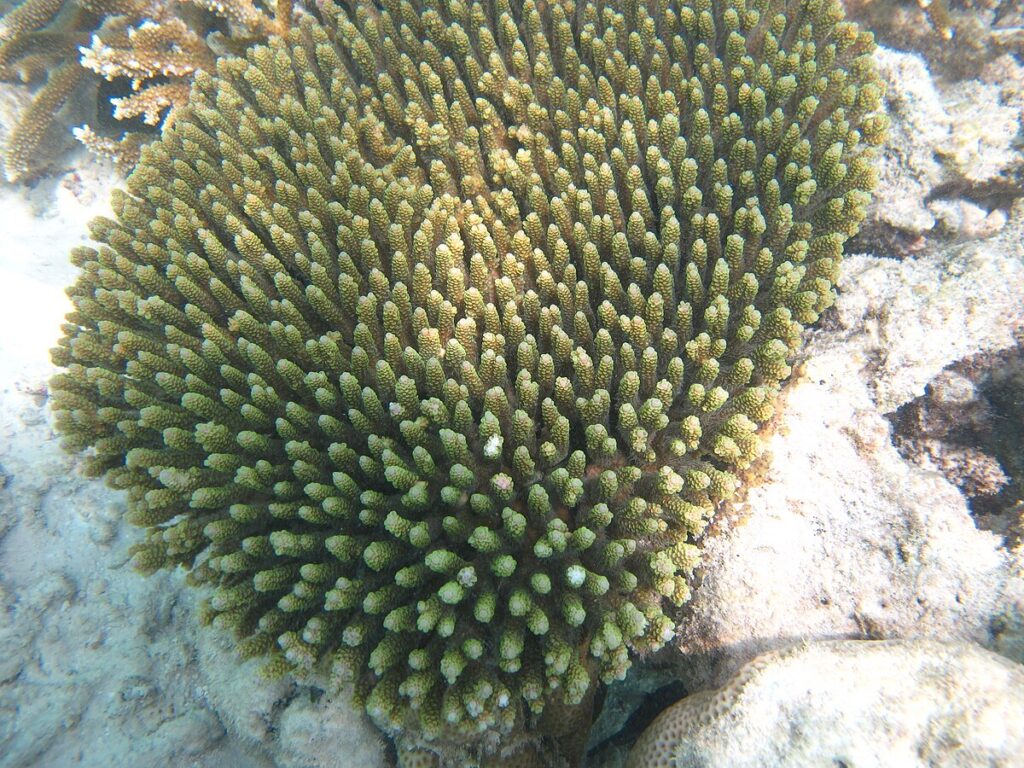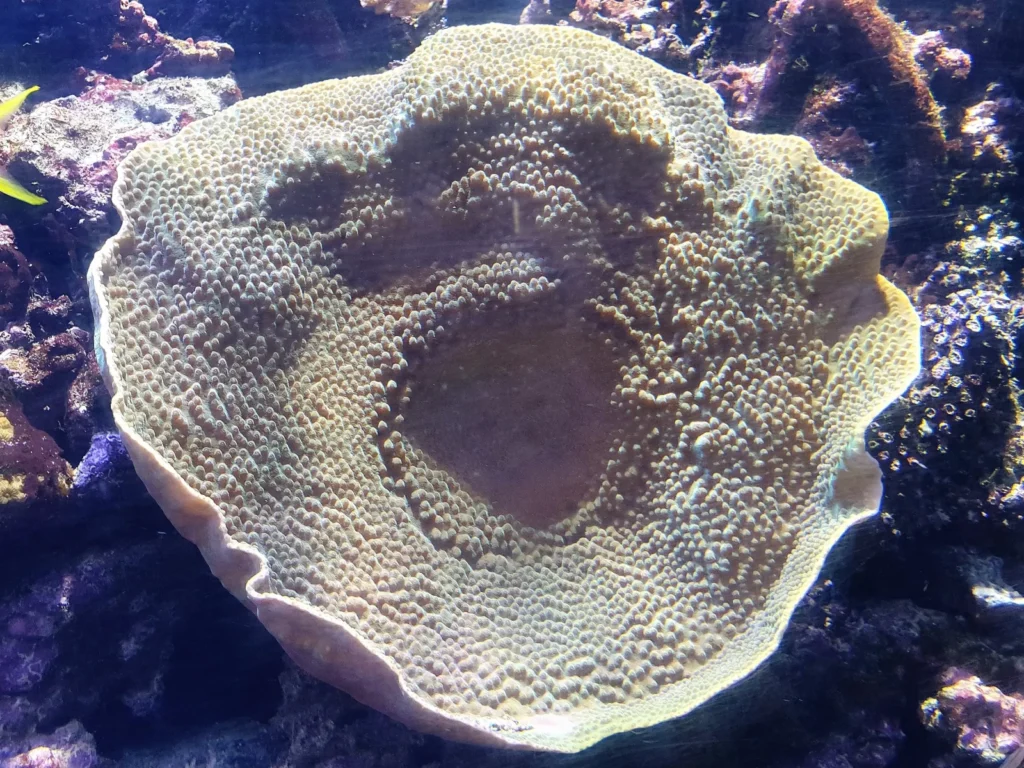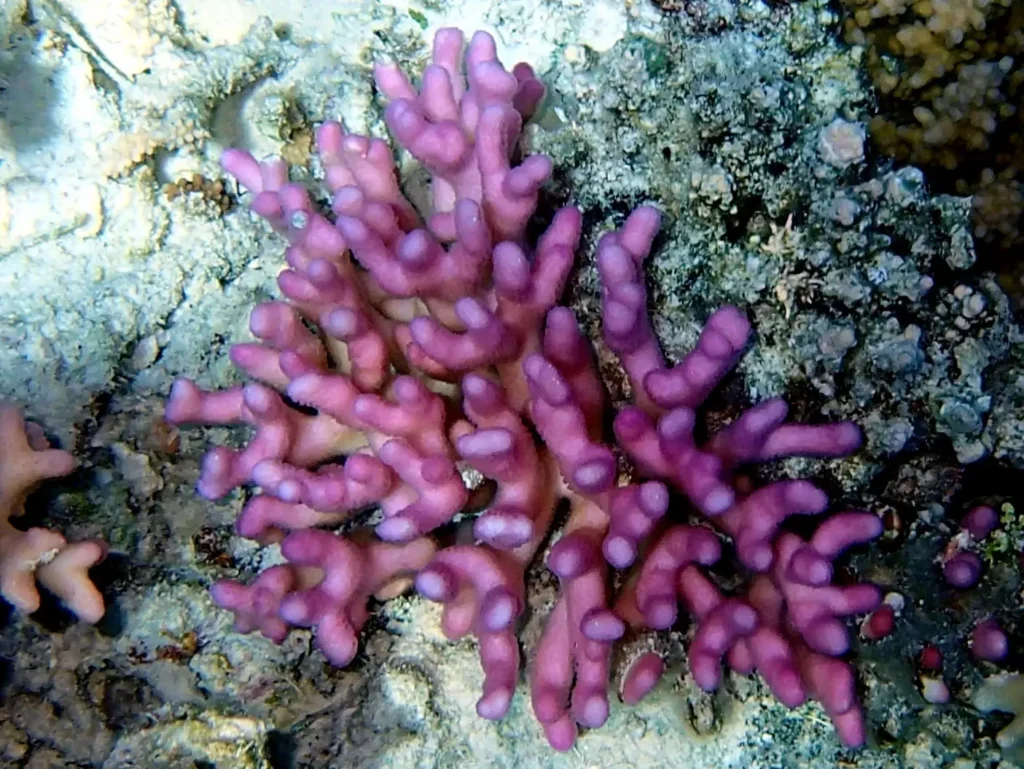SPS Corals, short for “Small Polyp Stony Corals,” are some of the most admired reef-builders in tropical oceans.
These corals have a knack for putting on a show in the reef! Known for their tiny polyps and colorful, branching shapes, SPS corals grow in intricate formations that look like underwater sculptures. When given the right care, they grow quickly, spreading their colorful structures across the reef like miniature forests. SPS corals also add motion to the reef – though their polyps are small, they open and sway gently, creating a mesmerizing effect under flowing water. Like nature’s architects, they form dense networks that provide shelter for fish and marine life, playing a starring role in healthy reef ecosystems.
Popular types: acropora, montipora, stylophora, pocillopora and seriatopora
What do SPS look like?
SPS corals, short for “Small Polyp Stony” corals, are known for their stunning, intricate structures and vibrant colors. Unlike other corals with large, fleshy polyps, SPS corals have tiny polyps that give them a fine, delicate look. Their branches, plates, or encrusting forms create a natural reef sculpture that resembles an underwater forest or rock garden.
Each species of SPS has its own unique growth pattern:
- Branching SPS form tree-like structures with thin, dense branches that provide shelter for small marine life.
- Plating SPS grow in wide, flat formations that stack like plates, creating natural ledges in the tank.
- Encrusting SPS spread like a colorful carpet, covering rocks and surfaces with intricate patterns.
The colors of SPS corals are often vivid and eye-catching, ranging from electric blues and greens to pinks, purples, and oranges. This color variety, combined with their complex shapes, makes SPS corals a favorite among reef keepers who want to create a striking, dynamic display in their aquariums.
What Do SPS Eat?
SPS corals primarily rely on photosynthesis for their energy. They have a symbiotic relationship with tiny algae called zooxanthellae, which live within their tissues. The zooxanthellae use light to produce energy, which they share with the coral, giving SPS corals most of their nutrition.
However, SPS corals can also benefit from additional nutrients. They have tiny polyps that can capture microscopic particles from the water, like plankton and dissolved organic matter.
This combination of light and nutrients allows SPS corals to thrive in nutrient-poor tropical waters.
In reef tanks, they may absorb nutrients from fish waste or benefit from occasional supplements like amino acids or specialized coral foods that are finely ground for easy absorption.
In short, SPS corals thrive with high-quality lighting for photosynthesis but can also benefit from a nutrient-rich environment to support their growth and vibrant colors!




